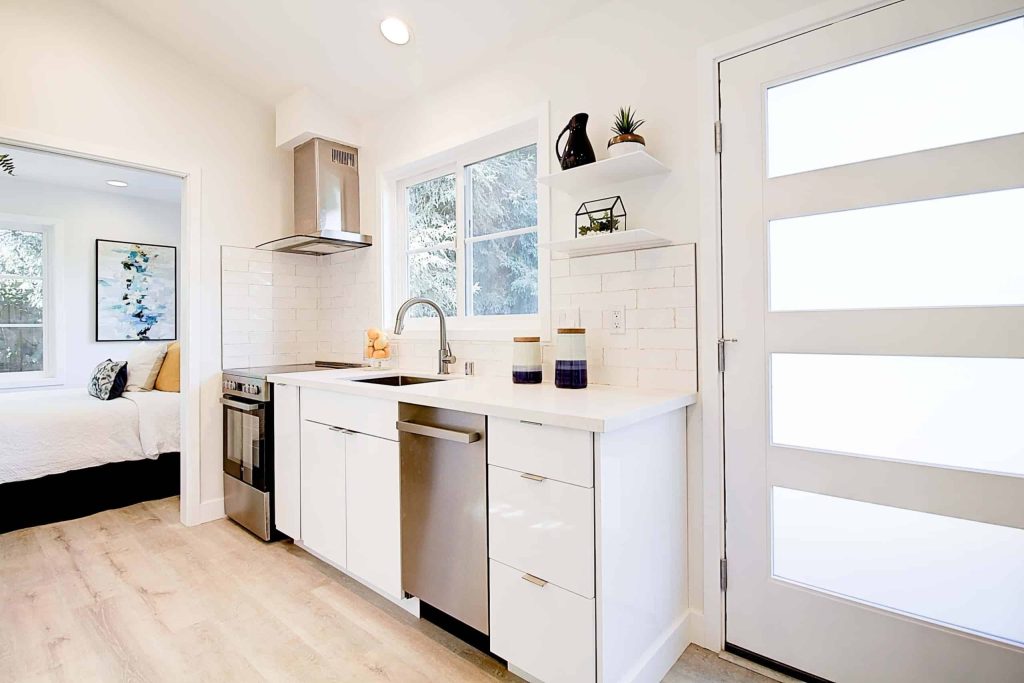Maximize Shared Kitchen Space Tips for Optimizing Efficiency

Shared Kitchen Spaces: An Essential Resource
In the ever-evolving landscape of food culture, shared kitchen spaces have emerged as invaluable resources for a diverse range of users. From seasoned chefs launching new food concepts to amateur cooks eager to explore their culinary passions, these communal kitchens provide the infrastructure necessary for creativity and productivity. As urban areas grow denser and the cost of real estate rises, the importance of utilizing shared kitchen facilities only becomes more pronounced.
Space Planning
The concept of space planning in shared kitchens is more than just how the appliances are laid out; it’s fundamentally about optimizing the flow of movement. This means strategically designing zones for cooking, prepping, and cleaning to ensure that one activity does not disrupt another. For instance, creating a designated prep area away from the stove can help minimize traffic and potential accidents, especially during busy cooking times. Moreover, incorporating features such as pass-through windows can facilitate communication between different task zones, enhancing efficiency.
Storage Solutions
Another vital aspect of organized shared kitchens involves storage solutions. In a communal environment, limited space can become a challenge, making it crucial to maximize every inch. Vertical storage, including shelves and pegboards, can free up counter space while keeping essential tools and ingredients within reach. Additionally, using labeled containers not only promotes cleanliness but also assists in inventory management. For example, having clearly marked bins for various staples like flour, sugar, and spices can significantly reduce time spent searching for ingredients, allowing users to focus more on their culinary creations.
Equipment Sharing
Furthermore, the idea of equipment sharing can enhance functionality without the need for additional investment in costly appliances. High-quality kitchen tools, such as commercial-grade mixers, immersion circulators, or sous-vide machines, can be shared among members, expanding the range of techniques that can be employed in the kitchen. This approach not only alleviates financial pressure on individual users but also encourages experimentation and collaboration, as cooks may be inspired to try new techniques or recipes they might not have attempted alone.
Cultivating Community
Creating an inviting atmosphere in a shared kitchen can significantly impact user experience. It fosters a sense of community that extends beyond the cooking itself. By promoting activities such as potlucks or cooking classes, shared kitchens can become social hubs where culinary enthusiasts network, share ideas, and learn from one another. This collaboration can spark innovation in culinary techniques and the exploration of global cuisines, ultimately enriching the local food landscape.

In conclusion, the optimization of shared kitchen spaces goes beyond mere functionality. By focusing on elements such as efficient space planning, practical storage solutions, and a wise sharing system for equipment, users can create a productive and harmonious culinary environment. As the trend of shared kitchens continues to grow, understanding these key strategies will not only enhance individual cooking experiences but also cultivate a collaborative community, making food preparation a truly shared journey.
CHECK OUT: Click here to explore more
Key Strategies for Maximizing Shared Kitchen Efficiency
As the culinary world embraces the share economy, optimizing efficiency in shared kitchen spaces has become paramount. Particularly in urban settings where space is at a premium, having effective strategies in place can make all the difference in maximizing productivity. With numerous cooks operating in a single environment, it’s essential to maintain order and streamline processes. Below are several key strategies designed to enhance efficiency in shared kitchens.
Workflow Organization
Establishing a clear workflow organization is crucial when multiple chefs are sharing the same kitchen space. By following a systematic approach to kitchen tasks, cooks can significantly reduce waiting times and enhance overall productivity. Consider implementing a color-coded system for different tasks, such as prepping, cooking, and plating. This can involve:
- Color-coded cutting boards: Different colors can denote specific food types (e.g., red for meat, green for vegetables), reducing cross-contamination risks and streamlining the prep work.
- Signage: Clear signage for each zone of the kitchen can guide users to their assigned areas, helping to avoid confusion and clutter.
- Scheduled cooking times: By establishing a cooking schedule that allocates specific times for each user, conflicts can be minimized and the kitchen flow improved.
Smart Technology Integration
Technology can play a pivotal role in optimizing shared kitchen spaces. Integrating smart kitchen technology not only simplifies tasks but also enhances communication among users. For instance:
- Inventory management systems: Digital inventory tools can provide real-time updates on supplies, ensuring that all users are aware of available items and minimizing waste.
- Online booking platforms: Using apps or websites to reserve kitchen time can streamline scheduling and prevent overbooking, thereby reducing anxiety among cooks.
- Temperature monitoring devices: Smart thermometers can alert users to cooking progress, ensuring that dishes are prepared to perfection and reducing the chances of errors.
Collaborative Ingredient Management
Effective ingredient management is central to successful shared kitchen operations. By adopting a collaborative approach, users can not only save costs but also encourage a culture of sharing and cooperation. Consider these strategies:
- Bulk purchases: Teaming up to buy in bulk can lead to significant savings on commonly used ingredients and supplies.
- Ingredient exchange: Creating an open forum for sharing excess ingredients can help minimize waste and diversify the menu options available to each user.
- Shared recipe database: Establishing a digital repository for recipes encourages collaboration and showcases unique culinary styles, fostering a community spirit among users.
By focusing on strategic workflow organization, integrating smart technology, and managing ingredients collaboratively, shared kitchen spaces can achieve remarkable efficiency. These elements not only streamline processes but also enhance the overall experience for users, transforming cooking into a more enjoyable and productive endeavor. As the landscape of shared kitchens continues to evolve, embracing these techniques will undoubtedly lead to culinary innovation and success.
| Category | Details |
|---|---|
| Efficient Layout | Utilizing an open kitchen layout minimizes movement and maximizes productivity. Positioning key appliances in a triangular format allows for easier access. |
| Storage Solutions | Vertical storage options, such as shelving and wall-mounted racks, help free up counter space, making it easier to work without clutter. |
| Shared Equipment | Establishing a shared inventory of appliances can reduce redundancy, ensuring that each kitchen user has access to the equipment they need to succeed. |
| Time Management | Implementing a schedule or shift system optimizes kitchen use by assigning time slots for cooking, reducing overlaps and enhancing workflow. |
When analyzing the benefits of optimizing shared kitchen spaces, it’s pivotal to recognize that the most effective approaches are rooted in organization and planning. Each user brings unique skills to the table, and by fostering cooperation, you not only improve efficiency but also build a sense of community. Whether it’s through designated cooking areas or shared responsibilities for cleaning and maintenance, the collective effort greatly enhances the experience within the shared kitchen. The future of communal kitchen spaces lies in creativity and collaboration.
CHECK OUT: Click here to explore more
Cultivating a Positive Shared Kitchen Culture
In addition to implementing physical and technological strategies, fostering a positive shared kitchen culture is essential for optimizing the efficiency and satisfaction of all users involved. The dynamics among kitchen users can greatly affect productivity and overall morale. Here are some effective ways to cultivate a collaborative and supportive kitchen environment:
Effective Communication Practices
Establishing robust communication practices is vital to ensure all users are aligned with operations and expectations in the shared kitchen. A lack of communication can lead to conflicts, mismanaged schedules, and inefficient workflows. Some tips for improving communication include:
- Regular meetings: Schedule consistent gatherings, whether in person or via video conferencing, to discuss logistics, share updates, and address any concerns.
- Group chats: Utilize messaging apps or platforms specifically for kitchen-related discussions. Creating a dedicated chat group can facilitate quick conversations regarding supply needs or schedule adjustments.
- Feedback loops: Encourage an open forum for feedback where cooks can share suggestions on improving operations. This not only builds camaraderie but can lead to innovative solutions and enhancements in workflow.
Training and Skill Sharing
Investing in training programs and skill-sharing initiatives allows users to enhance their culinary expertise while promoting teamwork and mutual support. Offering workshops or cooking demonstrations can lead to greater efficiency by:
- Cross-training: Teach chefs to master different techniques or cuisines, allowing them to fill in when someone is unavailable and maintaining continuity in operations.
- Productivity challenges: Host friendly competitions that focus on speed or creativity. This could inspire users to streamline processes and think outside the box, while also building community spirit.
- Peer mentoring: Pair experienced chefs with novices to foster skill development. This mentorship can boost confidence and elevate the overall quality of food being produced.
Flexible Space Utilization
Understanding the **importance of flexible space utilization** can make a significant difference in achieving peak efficiency. As needs within a shared kitchen often change, being adaptable with how space is arranged becomes crucial. Consider implementing these strategies:
- Modular equipment: Invest in equipment that can be easily moved or rearranged according to the current cooking needs. For instance, mobile prep tables or portable stoves can allow for quick changes in workflow.
- Zone versatility: Adapt the usage of various kitchen zones depending on the time of day or specific events. For example, during quieter hours, smaller teams can use the main cooking area, while larger groups might operate in multiple zones simultaneously during busy periods.
- Creative storage solutions: Introduce multi-functional storage units that keep ingredients organized yet accessible. This can free up counter space and enable cooks to work more efficiently.
By embracing effective communication, training opportunities, and flexible space utilization, shared kitchen spaces can thrive as dynamic environments that optimize efficiency. Cultivating a supportive atmosphere not only enhances productivity but also creates an enjoyable experience for everyone involved, ensuring the shared culinary journey is a positive and enriching one.
SEE ALSO: Click here to read another article
Conclusion: Unlocking Maximum Efficiency in Shared Kitchen Spaces
In the fast-paced culinary landscape, optimizing the efficiency of shared kitchen spaces is not merely a luxury; it is a necessity. The strategies discussed throughout this article—ranging from embracing effective communication to fostering a supportive culture and flexible space management—serve as essential pillars for maximizing productivity in culinary environments. As kitchens increasingly serve diverse cooking teams and business models, prioritizing collaboration and adaptability will undoubtedly yield significant benefits.
Investing in training programs and skilled mentorship not only improves individual proficiency but also strengthens the overall communal spirit. As culinary professionals share knowledge and techniques, they enrich the kitchen experience for all, paving the way for innovative culinary creations. Furthermore, flexible space utilization has the potential to transform a bustling kitchen into a harmonious workspace where workflow can seamlessly adapt to the ever-changing demands of service.
In essence, the common thread linking these strategies is the emphasis on community—both in spirit and practice. By nurturing strong relationships among kitchen users and embracing a culture of open dialogue, the kitchen can become a dynamic epicenter of creativity and efficiency. For those looking to explore these ideas further, resources such as culinary workshops, team retreats, and consultation services can provide deeper insights into creating a thriving shared kitchen culture.
As you look to maximize shared kitchen spaces in your own endeavors, remember that small adjustments can lead to profound enhancements in both productivity and morale. Start today, and witness the transformation of your culinary environment into a well-oiled machine that delights all who dare to step within its bustling bounds.


